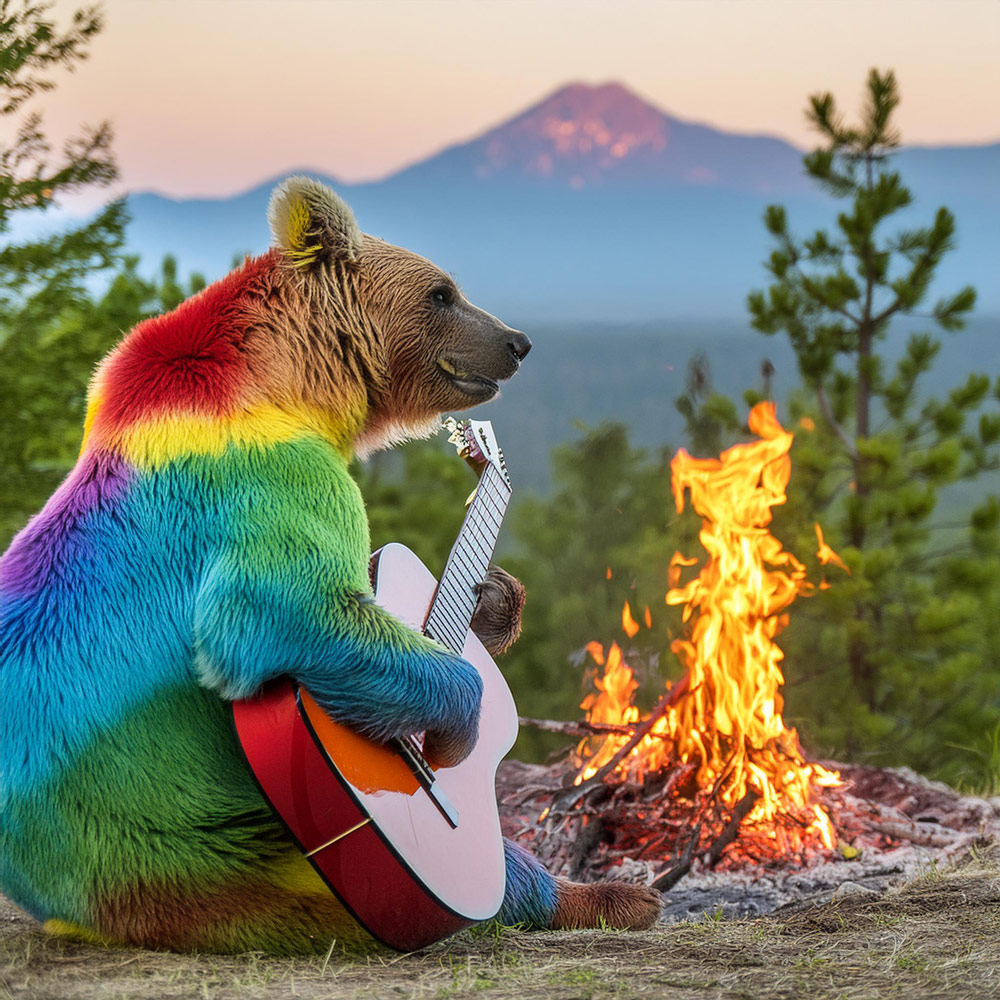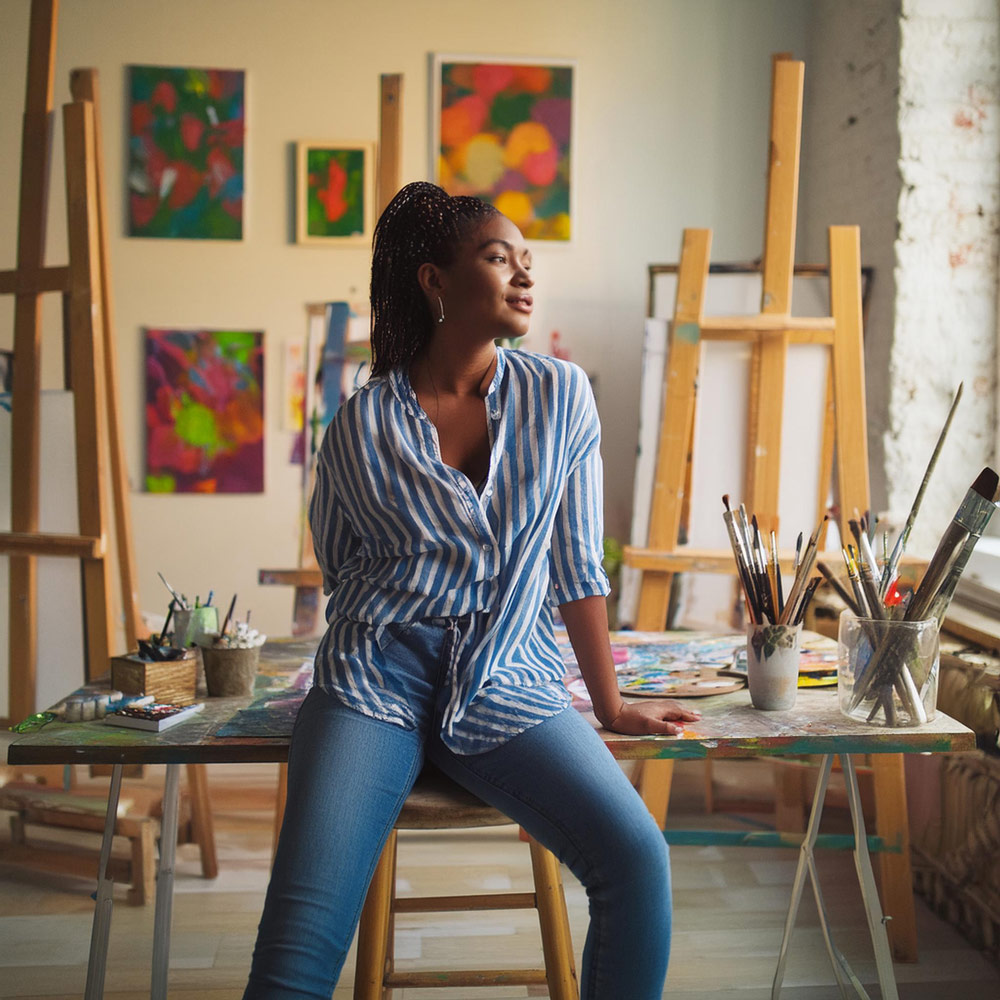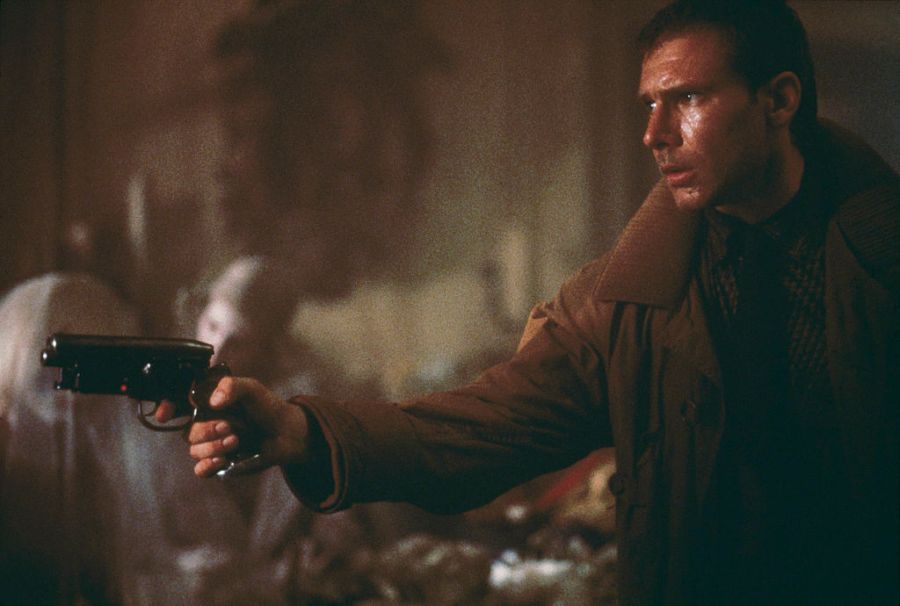A lot has been happening on the AI front this week, with Adobe releasing a slew of AI updates to Photoshop, driven by the latest version of its Firefly generative tool. For deputy editor Geoff Harris, it’s all getting a bit sci-fi.
So to recap, this week’s Photoshop updates seem mainly aimed at people who need to generate an illustration quickly as they sit there in front a blank screen – a cure for ‘designer’s block,’ in other words. Take one of Adobe’s examples.
Say you wanted a picture of a guitar-playing bear in front of a campfire (well, it’s possible…) Type in a prompt, and Photoshop/Firefly comes back with an image.

Strumming bears are one thing, but the press materials from Adobe also contain some intriguing examples of where Firefly is currently at when it comes to generating ‘hyper-realistic’ portraits of people.
Will the real hyper-realistic person stand up please?
I found it quite fascinating, and have roped in my friends to see if they can spot the difference between the AI people shots and portraits taken with a camera. Some could, some couldn’t.
Personally, I feel Adobe is getting very close, but doesn’t quite get the cigar. In this example below, the skin texture, hair and clothes are very realistic, but the irises appear unnaturally, almost eerily, large.

The same goes for this hirsute guitar player. Indeed, the guitar looks almost too realistic, yet his facial expression looks rather spaced out and synthetic for my money.

Adobe’s hyper-realistic AI generation seems to cope better when the generated models aren’t so close up in the frame, as in this much more convincing image of an artist in her studio (not quite sure what’s happened to her right arm, however).

Remember though that this is still relatively early days. Look how much more realistic video games are compared to even 10 years ago.
I’ve seen things you people wouldn’t believe…
Being a movie fan, I suddenly felt like Rick Deckard (Harrison Ford) in Blade Runner, trying to spot the ‘replicants’ amongst the rest of the population. Rick had his hands full, as identifying them wasn’t easy (I won’t give the plot away if you’ve not seen this fab movie or the surprisingly good Ryan Gosling remake).
Instead of bioengineered humanoids we’ve now got AI-generated humanoid images – not that I am feeling any urge to hunt them down and kill them, however. That said, a lot of photographers are worried that AI replicants will do a lot of damage to their business, particularly portrait and product photographers.
Yes, Adobe, camera makers and media organisations are working towards the clear labelling of AI-generated images, so an image of a war zone taken by a photojournalist, for example, can be shown to be ‘genuine.’ We are still some way from one globally recognised standard of showing content credentials, however, and in the meantime, AI technology isn’t pausing so we can catch-up.
Presumably, one imminent victim of AI generated images be the conventional stock-image market. Why would a company pay for an image of a camel, for example, when Photoshop will generate one for the cost of a Creative Cloud subscription (not that stock image sales have been much of an earner for some photographers for quite some time).
That said, I, and other commentators, might be unduly pessimistic.
Keep it real
I posed some of these questions to James Allsworth, head of content at stock image giant, Alamy. ‘As things stand, we are against submission of images that have been created using generative AI,’ he explained.
‘As the initial AI tools have emerged, so too have the legal and ethical concerns with how the (AI) models themselves were trained. Contractually, we need our contributors to have the right to license the images they upload and anything created on the back of ‘scraped’ copyrighted imagery is problematic.’

So there’s the legal side, but Alamy has also taken then decision to champion an ‘authentic aesthetic’ when it comes to the editorial imagery it sells. ‘Editorial’ can be a confusing term here, but put simply, it means images that help to tell a story (eg documentary shots) or support the accompanying text in a published piece (eg a photograph of somebody working out alongside an article about healthy habits).
‘I believe generative AI will always compliment real photography,’ James explains. ‘Editorial stock won’t be affected and in actual fact may benefit from being real / authentic so in turn may become a more premium product.’
In other words, real photographs of real people taken by real people will still command a higher price than those generated on a computer, according to James.
Could it be like food, where ‘organic’ imagery is marketed as being more honest and real, and free from artificial ingredients and additives? It sounds a strained comparison, but Adobe has been talking about some kind of ‘nutrition label’ for pictures.
James also tries to put the AI panic coming from some quarters into perspective.
AI panic? Not here
‘Every time there is a leap in technology, we’ve all heard it’s the end of photography,’ James wryly observes. ‘In my 20 years in this industry so far, I’ve heard that digital, then microstock, then NFTs were going to kill the current model…what happens is that the market just adapts.’
To sum up. It’s a cop out for journalists to say, ‘watch this space’ but you know what, we just have to watch this space when it comes to AI. Anyway, I enjoyed comparing myself to Rick Deckard this week, but never mind (though there’s still VR and actual robots to worry about…).
The views expressed in this column are not necessarily those of Amateur Photographer magazine or Kelsey Media Limited. If you have an opinion you’d like to share on this topic, or any other photography-related subject, email: ap.ed@kelsey.co.uk








